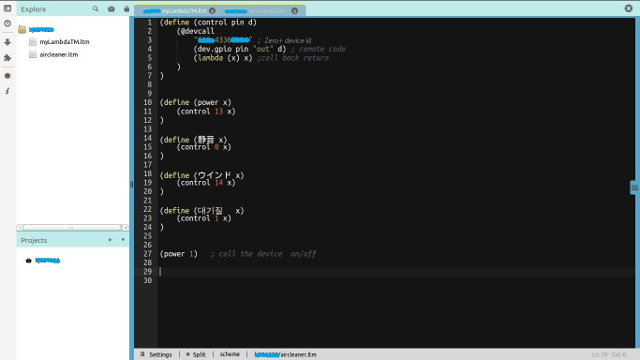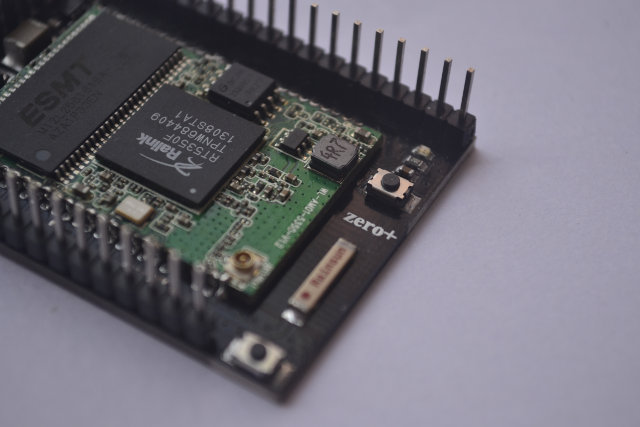There have been so many low cost Wi-Fi modules and boards with GPIO headers announced this year, especially on crowdfunding sites, and from the hardware point of view, Zero+ (Zero Plus) board looks very much like many other Ralink RT5350 boards such as Vocore or AsiaRF AWM002, but what makes it different is that it can be programmed with Lisp from a web-based IDE.
But let’s go through Zero+ board specifications first:
- SoC – Ralink/Mediatek RT5350 MIPS processor @ 360MHz with dual band 802.11n Wi-Fi with data Rate up to 150Mbps
- System Memory – 32 MB RAM
- Storage – 8MB to 16 MB SPI Flash (for firmware)
- Expansions Headers – 2x headers with access to I2C, SPI, USB, 2x UART, JTAG, and 14x GPIOs
- USB – 1x USB host port, 1x micro USB for power
- Misc – 2x buttons
- Dimensions – 36 x 25mm (possibly module dimensions only, not full board).
I’m quite confident the hardware should be OK, as they are using an existing Wi-Fi module (WL-AM01-5350-V1.2) soldered to a baseboard with USB ports, buttons, and expansion headers.
But as mentioned in the introduction, the interesting part is that it can be programmed and debugged from a WebIDE or a Cloud service using a Lisp programming language called Lambda, and there’s no need to build the code, or load the firmware as the Lisp interpreter will handle your project, a bit like if your programmed with Python or JavaScript.

The board is also a standard router running OpenWRT, so you should also be able to access it, and configure it in a more usual way if you prefer.
SmartMatrix, the company behind the project, is also providing ChipDuino, a tiny Arduino board supporting DIP MCU, to add more I/Os to Zero+, and support for a variety of sensors such as a VGA webcam, temperature and humidity sensors, light sensors, LEDs, gyroscopes, TFT and OLED screens, a PM 2.5 air quality detector, an infrared module and a microphone.
Zero+ board is shown in a few projects including an air cleaner, an electronic lock, and another project where it interfaces with Espruino JavaScript board.
In order to mass manufacture the board, the company has launched a flexible funding Indiegogo campaign planning to raise $25,000 or more. An early bird pledge of $19 can get you a Zero+ board, and after the first 100 boards, pledge will be $25. Many of the perks are kits going from $39 to $69 with sensors, a camera, an LCD display, etc… Albeit, no explicitly written, international shipping is probably included in all perks, and delivery is scheduled for February 2015.

Jean-Luc started CNX Software in 2010 as a part-time endeavor, before quitting his job as a software engineering manager, and starting to write daily news, and reviews full time later in 2011.
Support CNX Software! Donate via cryptocurrencies, become a Patron on Patreon, or purchase goods on Amazon or Aliexpress






It’s geek enough to attract lots of maker to fall in love with it : )
Toggle LED in accordance with current time:
LED is connected to GPIO11.
(define LED_On (lambda ()(dev.gpio 11 “out” 1)))
(define LED_Off (lambda ()(dev.gpio 11 “out” 0)))
(define CurrentTime?
(lambda ()(int (time.strftime “%H” (time.localtime (time.time)))))
)
(define Night?
(lambda ()
(and
(> ( CurrentTime? ) 16) (< ( CurrentTime? ) 23)
)
)
)
(if (Night?) (LED_On) (LED_Off))
Or they killed an otherwise very good product idea by using a niche language? We’ll see.